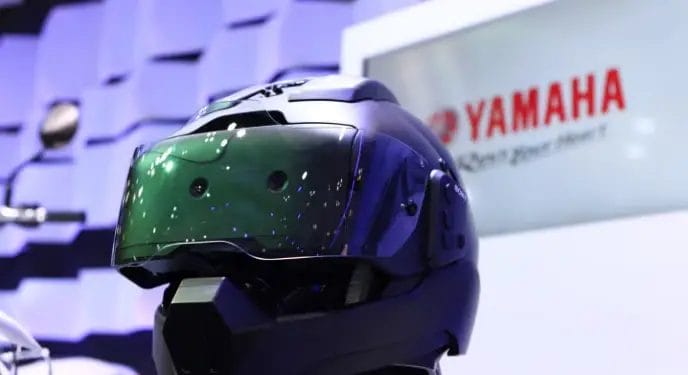Virtual reality and augmented reality – when VR elements are superimposed on the real world – have had a hesitant start in recent years. However, the launch of heavily promoted devices such as Apple’s Vision Pro or Meta’s Quest suggests that they are maturing into truly useful technologies and, inevitably, there are suggestions that they could somehow be incorporated into motorcycling.
Augmented reality is essentially a development of what used to be called simply a head-up display, superimposing information onto your normal field of vision. This idea has already been tried out several times with helmets. BMW presented an augmented reality motorcycle helmet in 2016 and this year unveiled a prototype of augmented reality driving glasses, but the slow pace of development is illustrated by the fact that the German company demonstrated a prototype of augmented reality glasses more than two decades ago, in 2003, and an augmented reality car windshield in 2011. Back in 2002, the company experimented with HUD helmets for the drivers of its F1 team. The technology is available, but there are still doubts about customers.
However, that isn’t stopping Yamaha from developing the same concept, and a new patent shows how it is considering incorporating AR into a motorcycle helmet. Yamaha’s interest in AR also goes back several years. In 2015, the PES2 electric sports bike concept was accompanied by an augmented reality helmet that worked in a similar way to the Apple Vision Pro passthrough. It incorporated a Sony mixed reality headset that covered the rider’s eyes and used stereo cameras to transmit images from the outside world to screens inside, adding AR graphics where necessary. But that was almost a decade ago and there still isn’t a Yamaha augmented reality helmet available for purchase (or a Yamaha electric sports bike, for that matter).

Fortunately, the company’s latest patent for this idea abandons the idea of completely covering your eyes with screens. Computers occasionally break down, and if this type of augmented reality headset did so at highway speeds, the user would break down too. Instead, a more HUD-like approach is being adopted, with transparent lenses through which you look, but which can also carry computer-generated images and information in your line of sight.
It’s this “line of sight” element that the new patent seeks to achieve, because Yamaha recognizes that you don’t keep your head still. Lean forward on a sports bike and you’ll see through the top of the visor. If you sit on a cruiser, you’ll see through a much lower section. What’s more, we’re constantly moving while driving, which makes life even more inconvenient for HUD designers. In order for AR images to be successfully superimposed on our vision, the helmet has to have external cameras to monitor what’s going on in front of us, but also internal cameras to check where our eyes are focused.
Yamaha’s design has up to four tiny cameras pointing at you (two for each eye) mounted on the rim of the augmented reality glasses behind the visor. These work in conjunction with infrared light to find out where each eye is looking, so that the system can decide where to position the images it is superimposing on the outside world. The patent doesn’t go into detail about the type of information that would be transmitted, but it is specific about the fact that the design is intended for use on motorcycles and reveals various configurations for different types of helmets, both open and integral. It also mentions that other helmet users – from pilots to baseball players – could benefit from the technology, but only in passing, to ensure that the patent’s coverage is as broad as possible.







